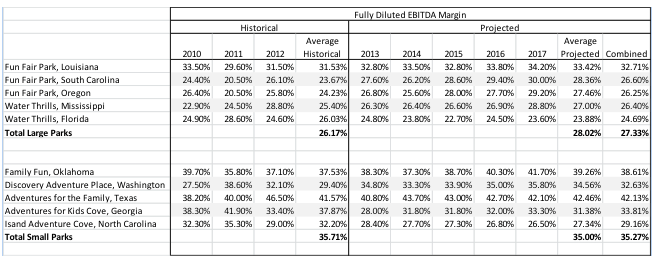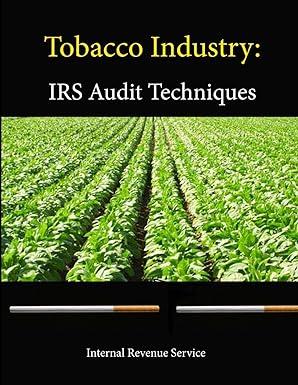Question
Whos in Charge Here? Overall Business Fun Fair Park & Entertainment (the Company) is a growing entertainment company that owns 10 theme parks as follows:
Whos in Charge Here?
Overall Business
Fun Fair Park & Entertainment (the Company) is a growing entertainment company that owns 10 theme parks as follows: Fun Fair Park, Louisiana; Fun Fair Park, South Carolina; Fun Fair Park Oregon; Water Thrills Florida, Water Thrills Mississippi, Family Fun Oklahoma, Discovery Adventure Place, Washington; Adventures for the Family, Texas; Adventures for Kids Cove Georgia; Island Adventure Cove, North Carolina.
Each of the Companys 10 theme parks engages in similar business activities (e.g., ticketing, food, parking, and games). Revenues are earned for each of the separate business activities conducted at the 10 parks. Each park is designed to have a small, fulltime employee base with a large seasonal staff that is hired each year. Employee costs represent the most significant annual expenditure by each park. Employees within the park are assigned to a base business activity but have the ability to assist other business activities within the park (i.e., a parking employee can also serve the food stands if necessary) and regularly do so. The movement of employees between businesses is not tracked for financial reporting purposes, and general park expenses are not allocated to the various business activities within each park. The operating results of each park are reviewed monthly by segment management (i.e., each park has a president that reports to the respective chief operating officer (COO) of that park who is directly accountable to, and maintains regular contact with, the Companys chief executive officer (CEO) to discuss operating activities, financial results, forecasts, and future plans). In addition, the CEO meets with each parks president several times per year to discuss budget/actual and forecasts.
The Company has a strategy committee that act together to make operational recommendations such as allocating resources. The Companys CEO participates as a member of the strategy committee but has the ability to make independent decisions that may not be in line with the strategy committees recommendations. The board of directors of Fun Fair Park does not have involvement with the day-to-day operations of the parks.
The parks are designed to provide a similar guest experience and provide the same basic business activities (e.g., ticketing, food, parking, and games) even though the rides and attractions of the parks vary.
Each park caters to families seeking leisure or tourist activities. The large parks have a more diverse (international) group of customers because of location. While the Company does not market its products differently to those customers, it does provide a few additional services including bilingual staff and certain internationally themed celebrations. Regardless of the location or customer base, the Companys overall strategy is to ensure each park is a premiere theme park.
Although the Company operates parks in several different states throughout the continental United States, the industry through which it operates, including food handling, water quality, ride operations, and animal-related permitting, are all monitored nationally; there are no significant differences in laws or regulations in the states in which the Company operates its parks.
Management Reporting
The CEO receives a monthly reporting package that includes a consolidated profit and loss statement (P&L) and a P&L for each of the 10 parks. The consolidated P&L and the P&Ls by park include revenues by business activity (e.g., ticketing, food, parking, and games) as well as total revenue. Expenses, including wages and other general overhead, are allocated to each park and are included in each parks P&L that is presented to the CEO. Expenses are reported in total in the P&L for each individual park since expenses are not allocated to each business activity. Although the CEO receives park-level data, the CEO makes decisions on a Company-wide or aggregated basis as opposed to a park-by-park basis (i.e., rides, attractions, shows and seasonal events are similar in each park).
The consolidated P&L and the P&L by park within the monthly reporting package include certain financial metrics considered to be important by the CEO. Those metrics are total revenue and adjusted earnings before interest, taxes, depreciation, and amortization (EBITDA) margin. A summary of some of the information presented to the CEO is included at the end of the case.
Discussions with the CEO and a review of competitors indicate that attendance is a critical business metric used by competitors in the industry. The CEO, however, uses adjusted EBITDA to make investment and allocation decisions to drive attendance growth. In addition, adjusted EBITDA is a significant factor in compliance with debt covenants because it includes an allocation of both employee and other overhead costs and the compensation of top executives of the Company
Since total revenue ultimately drives profit, it is also included in the monthly reporting package. The Company analyzes long-term growth rates of revenue in its analysis, noting the compound annual growth rate (CAGR) over a 10-year period is between 2 percent and 4 percent, with the higher range occurring because of the attractions at newer parks. The CAGR projected for 20132017 is between 2 percent and 3 percent for each park.
Financial metrics analyzed by the CEO are highly dependent on the opening of new attractions and, therefore, the metrics may fluctuate slightly from year to year on the basis of the capital spending time frame and opening of new attractions.
Information Provided to Board of Directors
The board of directors is provided with a consolidated P&L that includes total revenue
and adjusted EBITDA similar to the P&L received by the CEO. The board of directors
does not receive information on a park-by-park basis or any other segmented grouping.
Required:
Question 1 Who is the chief operating decision maker (CODM) of Fun Fair Park?
Question 2 What are the operating segments for Fun Fair Park?
Question 3 Would it be acceptable for the Company to aggregate the operating segments identified in Question 2 into a single reportable segment for financial statement disclosure?


Step by Step Solution
There are 3 Steps involved in it
Step: 1

Get Instant Access to Expert-Tailored Solutions
See step-by-step solutions with expert insights and AI powered tools for academic success
Step: 2

Step: 3

Ace Your Homework with AI
Get the answers you need in no time with our AI-driven, step-by-step assistance
Get Started


